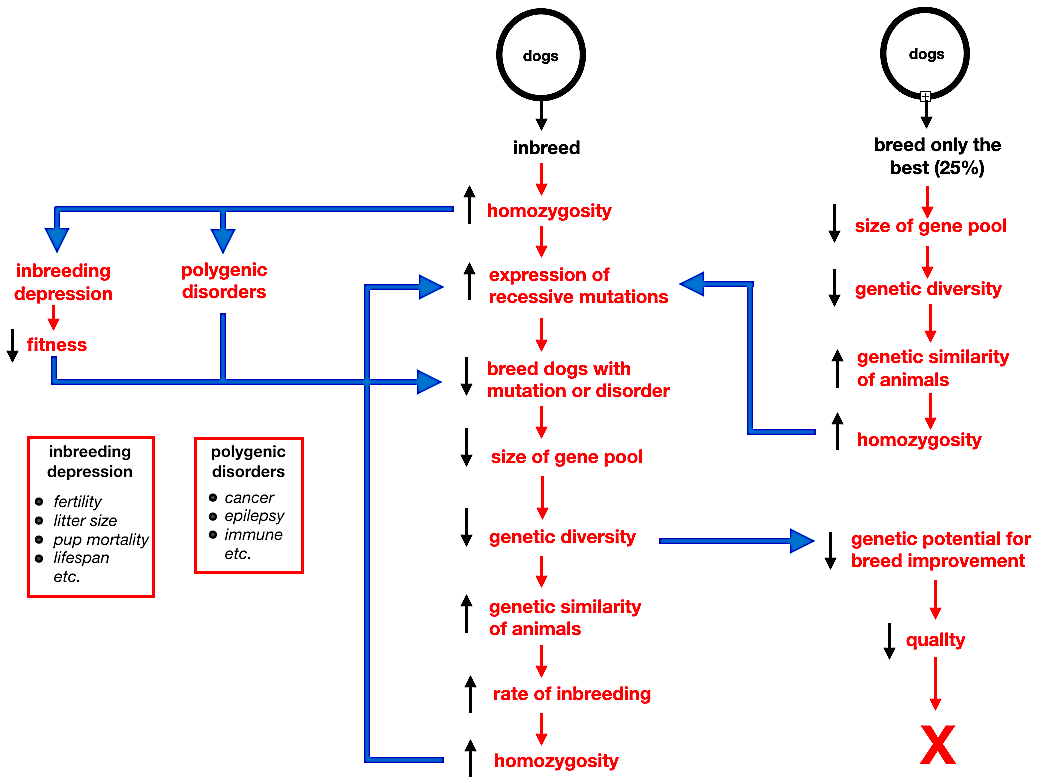I have created a very basic flow chart to illustrate how a breeding strategy to reduce genetic disorders in a population will actually have the opposite effect. I will go through each of the steps in the process, and you can follow along on the picture.
2) Every dog carries dozens or even hundreds of recessive mutations. For the most part, these cause no problems if there is only a single copy of the mutation and the other allele at the locus is normal. But if two copies of the mutation are inherited, there is no copy of the normal allele. This is why inbreeding, which results in homozygosity. increases the expression of these recessive mutations.
3) Homozygosity also has more general detrimental effects on function such as reduced fertility, smaller litters, higher puppy mortality, shorter lifespan, etc., which we collectively call "inbreeding depression". Inbreeding also increases the incidence of polygenic disorders such cancer, epilepsy, immune system disorders, heart and kidney issues, and others.
5) Removing dogs from the breeding population reduces the size of the gene pool.
6) Smaller gene pools have less genetic diversity.
7) With less genetic variation in the population, the genetic differences among individuals are reduced and their similarity and relatedness increases.
8) Breeding related animals is inbreeding, so once again this step results in an increase in homozygosity.
The result of this negative feedback loop is the steady deterioration in health of the population over the generations unless there is appropriate intervention.
a) Breeders are very selective about which dogs are used for breeding. In general, about 25% of the purebred puppies produced are bred, and typically this is only one or two puppies per litter.
b) Of course, this means that 75% of the puppies are not bred. Removing them and any unique genes they may carry from the breeding population reduces the size of the gene pool.
c) Smaller gene pools have less genetic diversity.
d) If there is less genetic diversity, the dogs in the population are more similar to each other genetically.
e) Breeding dogs that are similar genetically will produce homozygosity in the offspring.
f) Homozygosity increases the expression of deleterious mutations.
Ultimately, the path feeds into the steps we have already described that form a negative feedback loop that increases the incidence of genetic disease.
"MORE ON "Simple strategies to reduce genetic disorders in dogs"
ICB's online courses
***************************************
Visit our Facebook Groups
ICB Institute of Canine Biology
...the latest canine news and research
ICB Breeding for the Future
...the science of animal breeding


